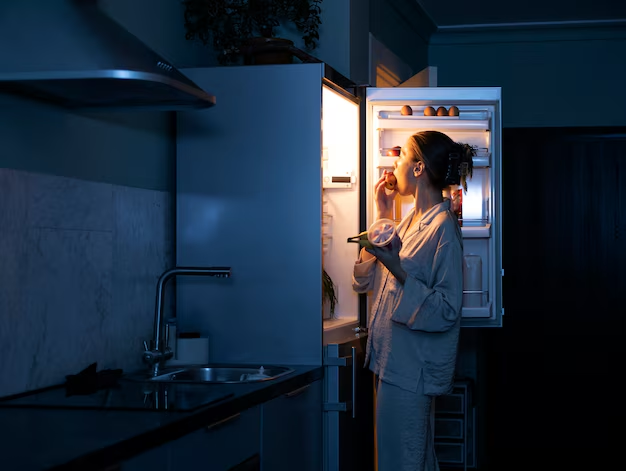How to Connect a Water Line to Your Refrigerator: A Step-by-Step Guide
Connecting a water line to your refrigerator can seem like a daunting task. However, with the right guidance, you can accomplish this project safely and efficiently. Whether you're aiming to enjoy crisp, chilled water or ice at the touch of a button, integrating your refrigerator with a water supply is both convenient and a great feature in modern kitchens. This guide will walk you through each step, helping you tackle the task with confidence.
Understanding Your Refrigerator and Plumbing Needs
Why Connect a Water Line?
The benefits of connecting a water line to your refrigerator extend beyond just convenience. Here are a few compelling reasons:
- Access to Cold Water and Ice: With a direct water line, enjoy hassle-free access to refreshing drinks and ice.
- Improved Appliance Functionality: Refrigerators with water lines often provide more features, increasing appliance utility.
- Value Addition: It can potentially boost the value of your home by making your kitchen more desirable.
Tools and Materials You’ll Need
Before diving into the installation process, gather the necessary tools and materials. Having everything on hand will streamline the process:
- Tools: Adjustable wrench, drill, measuring tape, and a small bucket or towel.
- Materials: Copper or braided steel water supply line, piercing saddle valve or T-valve, Teflon tape, and appropriate fittings for your specific refrigerator model.
Understanding your refrigerator's requirements and the layout of your home's plumbing is essential before beginning.
Preparing for Installation
Safety First
Always prioritize safety. Here are some precautions to consider:
- Turn Off Water Supply: Ensure the water supply is switched off before starting.
- Consult the Manual: Refer to your refrigerator's manual for specific guidelines.
- Electricity Awareness: If your refrigerator requires electricity for water features, unplugging it during installation is wise to avoid any electrical mishaps.
Evaluating Placement
Determine the optimal path for running your water line:
- Proximity to Water Source: Ensure your refrigerator isn't too far from a water supply line, often found beneath the kitchen sink or a nearby bathroom.
- Path Planning: Plan the route for your line to minimize bends, which can restrict water flow and increase the potential for leaks.
Step-by-Step Guide to Connecting the Water Line
Step 1: Locate the Nearest Cold Water Source
An existing cold water pipe is usually the best source to tap into.
- Common Sources: Look for pipes under the kitchen sink or nearby bathroom that can supply cold water.
- Accessibility: Ensure the chosen pipe is not only close but also easy to access.
Step 2: Install the Saddle Valve or T-Valve
A saddle valve or T-valve lets you add a connection to an existing water line without significant alteration.
- Drill and Fit: Drill a small hole at the selected pipe location if you're using a saddle valve. This step is unnecessary with a T-valve.
- Secure Valve: Attach your valve securely, ensuring it's watertight by wrapping Teflon tape around the threads prior to attachment.
- Switch Valve Position: Ensure the valve is in the off position after installation.
Step 3: Run the Water Line
With your source ready, it's time to run the water line:
- Measure and Cut: Measure the distance from the valve to your refrigerator's inlet, then cut your line accordingly.
- Secure Line: Run the line along baseboards or behind cabinets, securing it with cable clips to avoid movement.
Step 4: Connect to the Refrigerator
Attach the water line to the refrigerator’s supply valve:
- Attach the Line: Using the appropriate fitting, securely attach the line to the refrigerator.
- Check Tightness: Ensure the connection is secure by tightening with a wrench but take care not to over-tighten, which can lead to damage.
Testing and Troubleshooting Your Connection
Testing for Leaks
After completing the installation, it's essential to test the system:
- Turn on the Water: Slowly turn on the water supply using the saddle or T-valve.
- Check Connections: Inspect all connections along the water line and valve for leaks. Tighten them if any leaks are detected.
Flush the System
Flushing the system is crucial to remove any debris or air from the line:
- Run the Water: Allow water to flow through the line into a bucket until the water runs clear, eliminating any potential contaminants or air.
Troubleshooting Common Issues
If you encounter issues, consider these tips:
- Low Water Pressure: Check for kinks or bends in the water line and straighten them if necessary.
- Persistent Leaks: Re-evaluate all connections, ensuring they are properly sealed and aligned.
Enhancing Safety and Longevity
Once your system is up and running, consider these ongoing maintenance tips:
- Regular Inspections: Periodically check hoses and connections for signs of wear or leaks.
- Water Filters: Replace water filters according to the manufacturer's schedule to maintain water quality.
- Seasonal Shut-Offs: Consider shutting off the water supply if away for extended periods to prevent potential leaks.
Summary: Key Takeaways for Connecting a Water Line to Your Refrigerator
Here's a concise recap to help you remember the essential steps and tips:
- 🛠 Gather Tools & Materials: Adjustable wrench, drill, water supply line, valves, Teflon tape, fittings.
- 🔧 Prepare & Plan: Assess water line route, safety checks, and equipment requirements.
- 🚰 Installation Steps: Locate water source, install valve, run and connect water line.
- ✅ Testing & Maintenance: Check for leaks, flush system, troubleshoot, and maintain routinely.
Successfully connecting a water line to your refrigerator enhances the functionality of your kitchen and brings added convenience to daily life. With this guide, you now possess the knowledge to tackle this home improvement project confidently. Enjoy the refreshing, easy access to cold water and ice right from your refrigerator!
